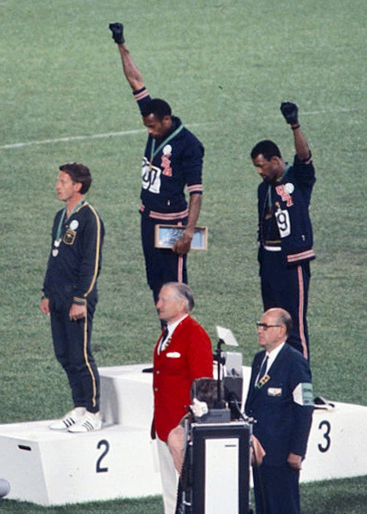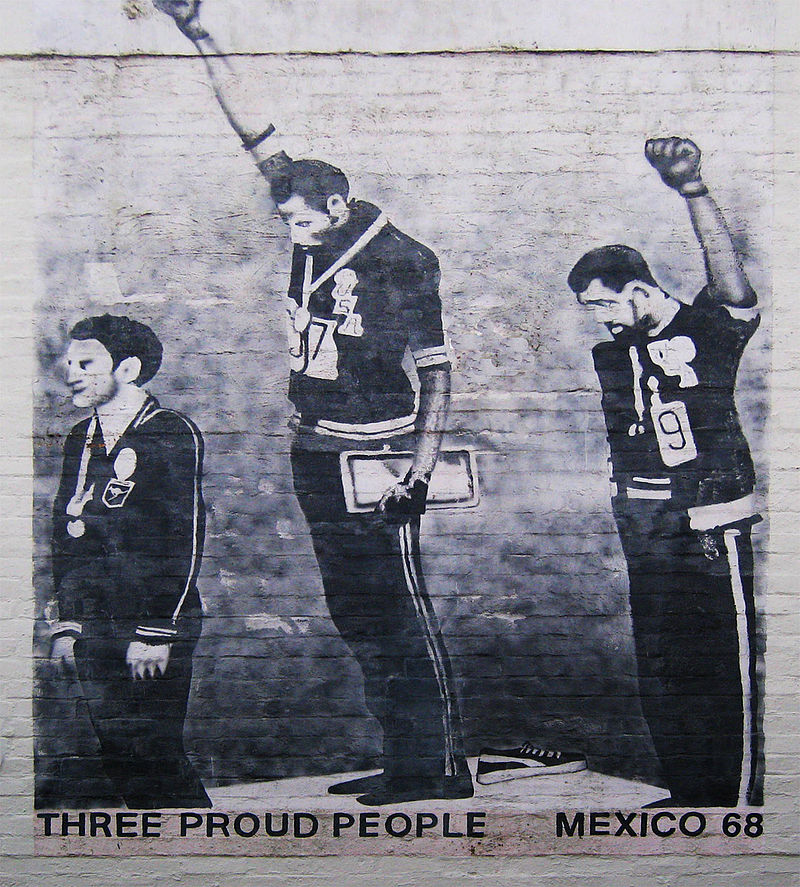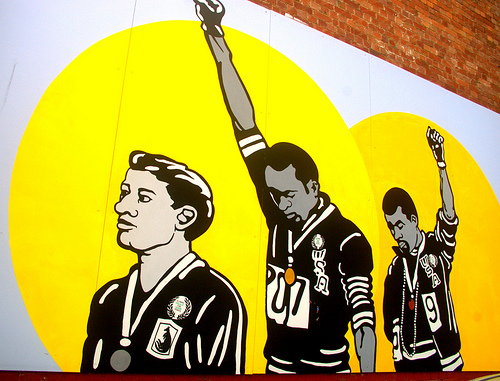Peter Norman was an athlete who was born in 1942, in Melbourne, Australia, to a working-class family. When he was a young boy, Norman loved playing football. However, as he was poor, he could not afford the kit to play Australian Rules Football.
Yet his sprinting talent was quickly recognized and he was picked to represent Australia at the Summer Olympics in Mexico in 1968.

At that time the Civil Rights movement across America fought against the segregation and racism. Although Norman was thought to be an anti-racial person, no one expected him to take a stand in Mexico.
Norman participated in the 200 meters race at the Olympics. No one thought that he would reach the throne, as clear favorites were the Afro-Americans Tommie Smith and John Carlos. Opposite to the expectations, Norman managed to finish second at 20.06, which was his best result ever and an Australian record, but Tommie responded to this result with a world record at 19.83 seconds. John finished third clocking in at 20.10.
Although it was a great race, what happened afterward at the award ceremony will be greatly remembered. In the tunnel, just before the ceremony, Tommie and John told Norman what they were about to do on the podium.
They planned to step on the podium wearing black gloves on their rising fists representing The Black Power and black unity, but they only had one pair of gloves. It was Norman that suggested them to share the pair. Also, they wore the Olympic Project for Human Rights badge and stepped on the podium barefooted symbolizing the poverty of colored people. They wanted to show the world how they fought for their human rights.
What Norman did, astonished everyone. When he saw that Tommie and Carlos wore the Olympic Project for Human Rights badge, he asked a member of the U.S. rowing team if he could get one for him. As the U.S. rower Paul Hoffman only had his own badge, he immediately gave it to him.

After receiving their medals, Tommie and John raised their fists and everyone focused on their salute. Not many noticed that Norman was wearing the Olympic Project for Human Rights badge too. Norman’s idea was to show solidarity and help Tommie and John fight for their human rights.
“We knew that what we were going to do was far greater than any athletic feat, and he said “I’ll stand with you” – said John Carlos – “I expected to see fear in Norman’s eyes, but instead we saw love.”
This simple gesture that Norman did, proved to be fatal to his career. Norman was accused of making a political statement. After this incident, Norman was never given the chance to participate in the Olympics again. That is why he gave up athletics.

Today, there is a statue of Tommie and John at the San Jose State University, but Norman is not part of it. The fact that he is not included on the podium seems an epitaph of a hero that no one ever noticed. Although he is the best athlete Australia ever had, he remained forgotten even in his country.
Norman died of heart attack in 2006. Both Tommie and John attended his funeral.
